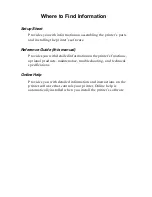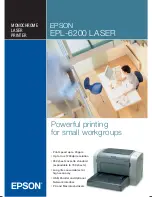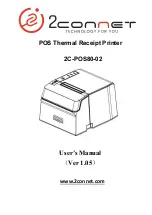
Programming Codes
T480
Programmer’s Guide
Page
94
Rev A
100-14362
Linear Barcodes
Code-39 and Code-39 Extended
Function
Code-39
ASCII
[ESC] b <1> {information} [NUL]
Hexadecimal
1BH 62H <1> ... 03H
Decimal
<27> <98> <1> ... <3>
[ESC] b <1> TransAct[NUL]
Note: Case conversion to upper case.
Figure 5 Code 39 Example
Code 39 is an alphanumeric bar code. It is a discrete, self-checking, variable-length
code. The printer prints the complete data field. The number of characters that can be
printed depends on the bar width scaling. There are two modes of operation for the
Code 39 barcodes. The first is in a variable length format. In this mode all characters
sent to the printer will be printed up to the termination character. Only 0-9, A-Z -, period,
and space may be printed. $, %, +, and / Characters may be used as escape characters
for full 128 character support. If illegal characters are passed to the printer, they are
converted to legal codes. (For example, a would be converted to A).
Function
Code-39 Extended
ASCII
[ESC] b <1><L>{information}
Hexadecimal
1BH 62H <1><L>{ ...
Decimal
<27> <98> <1><L>{ ...
[ESC] b <1><8>TransAct
Note: Extended character support however the
barcode is much denser and harder to read.
Figure 6 Code 39 Extended Example
In full 128 character mode, the printer will encode the full 128 character set. In this
mode, the first character received must be the length. IE. [ESC]b<1><L
>… where L
specifies the number of characters to follow and must be less than 32. The characters
following the length may be from 0 to 127. Values greater than 127 are converted to
printable characters by removing the 8
th
bit.
Note:
In extended mode the printer will automatically convert extended
characters to the character pair equivalent. The HRI will print the
extended character not the character pair.
















































